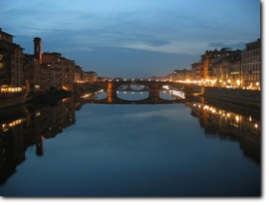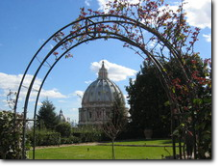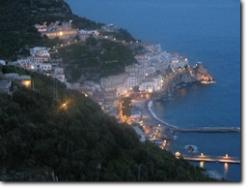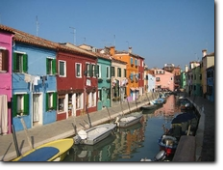Tuscany | Tuscany Travel | Tuscany Vacations | Tuscany Tours - Rome Travels | Home | Rome Guide | Rome Tours | Rome Travel | Religious Holidays | Italy Pilgrimages | Italy Shore Excursions




Main menu:
Tuscany | Tuscany Travel | Tuscany Vacations | Tuscany Tours
Rome Travels operates a lot in Tuscany Italy. We have not only one of the co-founders of our company going back and forth to Florence (Federico Pellegrini) but also our local team of local correspondents, minibus companies and Villas in Tuscany. We are working all toghether since many years as a great team to give you the best for your Tuscany vacations.
Rome Travels will help you in getting the required assisitance throughout your Tuscany tours, providing you all the logistic values: private & expert local guides along with private transportation. Or if you are planning a Tuscany travel, we will customize step-by-step your adventure in Tuscany before you leave home to Tuscany.
The great aspect of knowing somebody who lives in Tuscany and wroking as a team gave us the chance to get in the business of Villa in Tuscany. There are plenty of Tuscan villas spread out in the 10 municipalities of Toscana: we are pretty sure we will find the best for your family needs, family vacation and relax.
TUSCAN History - Brief Intro on Tuscany - Few raws as introduction
Apennine & Villanovan cultures
The pre-Etruscan history of the Tuscan area was inhabited by peoples of the so-called Apennine culture (roughly 1350–1150 BC). Then followed the Villanovan culture (1100–700 BC) which saw Tuscany, and the rest of Etruria, taken over by chiefdoms. City-states developed and the Etruscan civilisation rose.
Etruscans - The Etruscan civilization
The Etruscans were the first major civilization in Tuscany and civilized enough to implement agriculture, mining and prodicing a flourish art (The Etruscan Art). The Etruscan civilisation grew to fill the area between the rivers Arno and Tiber from the IX cent. B.C. and ceded all power and territory to the Romans by the Ist cent. B.C.
Romans
Soon after absorbing Etruria, Rome established the cities of Lucca, Pisa, Siena, and Florence, endowed the area with new technologies and development, and ensured peace. These developments included extensions of existing roads, introduction of aqueducts and sewers, baths and remodeling towns, bringing Law and order.
Medieval Tuscany - Tuscany in the Middle Ages
With pilgrims travelling along the Via Francigena between Rome and France came wealth and development during the mediæval period. The conflict between the Guelphs and Ghibellines, factions supporting, respectively, the Papacy and the Holy Roman Empire in central and northern Italy during the 12th and 13th cent. split the Tuscan people. The balance between these municipalities were ensured by the assets they held: Pisa, a port; Siena, banking; Lucca, banking and silk. By the Renaissance, however, Florence succeeded in becoming the cultural capital of Tuscany and also due to the terrible back plague in 1348 which exterminated most of the artists and activities in Siena.
Tuscany & The Italian Renaissance
Tuscany is considered the cradle of the Italian Renaissance and its artistic heritage includes architecture, painting and sculpture, collected in dozens of museums in towns and cities across the Tuscan region. Perhaps the best-known are the Uffizi, the Accademia and the Bargello in Florence. Among others, Tuscany was the birthplace of Dante Alighieri ("the father of the Italian language"), Leonardo da Vinci, Michelangelo, Giotto, Filippo Brunelleschi, Cimabue, Sandro Botticelli, Domenico Ghirlandaio, Niccolò Machiavelli, Luca della Robbia, Donatello, Amerigo Vespucci, Benvenuto Cellini, Lorenzo the Magnificent.
From the Renaissance to the 21st Millennium
In the 1400s, the rulers of Florence, the Medici Family, annexed surrounding lands to create modern-day Tuscany. With the Italian Wars of Independence in the 1850s, Tuscany was transferred from Austria to the newly unified nation of Italy and briefly Florence became the Capital of Italy for only 4 years (1866-1870) until Rome joined the rest of the Kingdom of Italy.
Today Tuscany is the renomated for its extraordinary museums, shops, outlets, banking, Italian fashion.
What's the Chianti ? What does " Chianti " mean ?
Chianti, is the territory that since centuries produces the Chianti Classico wine, it's that part of Tuscany hilly territory situated between Florence and Siena, rich of artistic masterpieces, this zone represents an historic and natural mosaic unique in the world.
This is a land of ancient traditions, civilizated in remote times, first from the Etruscans and then from the Romans. In the Middle Ages, Florence and Siena fought harsh battles for the control of this territory. During this age, the typical villages and castles rose, they are still today characterizing the hilly landscape, moreover since that time were placed the bases for the cultivation of grapes and olive tree, that progressively it acquired economic importance and international reputation.
Rome Travels arranges for private & exclusive tours in the Chianti Region, both the Florentine Chianti and the Senese Chianti. You will be touring amongst Medieval Castles and Tuscan Burgs, Renaissance Fortresses and wineries, Medieval Abbeys and incomparable hills and landscapes.
Our Tuscany Tours are out of the ordinary ones provided by the drivers-guides who are illegal and don't pay even taxes or those arranged through the hotels. Don't let it be trapped by those who try to sell you a Tuscan Tour for few Euros. The quality, the culture, the profession, the experience have to be rewarded accordingly.
Best Destinations in Tuscany: Cities and Places to visit in Tuscany, Italy
Florence : Cathedral of Santa Maria del Fiore, the Baptistery of St. John, the Uffizi Gallery, the Bargello Museum, the Pitti Palace, the Accademia, the Basilicas of Santa Maria Novella and Santa Croce, the library of San Lorenzo, the Boboli Gardens.
- Siena: Duomo, Santa Maria della Scala, Churches of San Domenico, St. Francis, Palio, Piazza del Campo
- Pisa : Duomo, Baptistry, Leaning Tower.
- Chianti Senese: Castellina in Chianti, Fonterutolo, Castelnuovo Berardenga, Gaiole in Chianti, Badìa a Coltibuono.
- Chianti Fiorentino :
- Val d'Orcia: it's in the province of Siena
- San Gimignano: it's in the province of Siena
- Volterra: Duomo, Baptistry, Etruscan Museum & Gate, Roman Theatre, Medici's Fortress.

Tuscany is known for its landscapes and its artistic legacy.
Six Tuscan localities have been protected and declared by UNESCO as of World Heritage Sites: the historical center of Florence (1982), the historical center of Siena (1995), the square of the Cathedral of Pisa (1987), the historical center of San Gimignano (1990), the historical center of Pienza (1996) and the Val d'Orcia (2004).
Throughout our Tuscany Tours, we may visit each of these sites with our professional Tuscan guide who will help you step-by-step in defining your Tuscan travel itinerary.
Rome Travels specializes in the following services related to
the Tuscany Vacations:
Rental of a Farmhouse in Tuscany (Villa Rental Tuscany)
Tuscany Tours and day trips from Florence
Hotel Florence and Tuscany accommodation
Florence Tours with professional English speaking guide
Private transportation (Florence - Rome or from anywhere in Tuscany to Rome & viceversa)
Tuscan Castles and Abbeys.
TUSCANY TOUR 1- Tuscan Routes - Florentine Chianti
From Florence
1. San Casciano Val di Pesa
2. Tavernelle Val di Pesa
3. Barberino Val d'Elsa & Pieve Sant'Appiano
4. Greve in Chianti
Tuscany Tours - 8 hours
Any tour can be modeled according to your wishes or specail interests.
Costs, including private guide & transportation (Sedan-Minivan-Minibus-Bus), 8 hours full day guided tour:
1-2 people: EUR 1.100,00
3-7 people: EUR 1.500,00
8-17 people: EUR 150,00 per person
20-40 people: EUR 110,00 per person.
Note: entrance fees and lunch, not included.
NOTE on payments:
To confirm any tour, we require either a deposit or full prepayment by Visa-MasterCard + 21% VAT TAX on top.
In case you wish to pay the deposit, it will be charged at cost + 21% VAT TAX and then the balance by cash to your assigned tour guide. The amount of the deposit depends on which kind of tour is selected.


